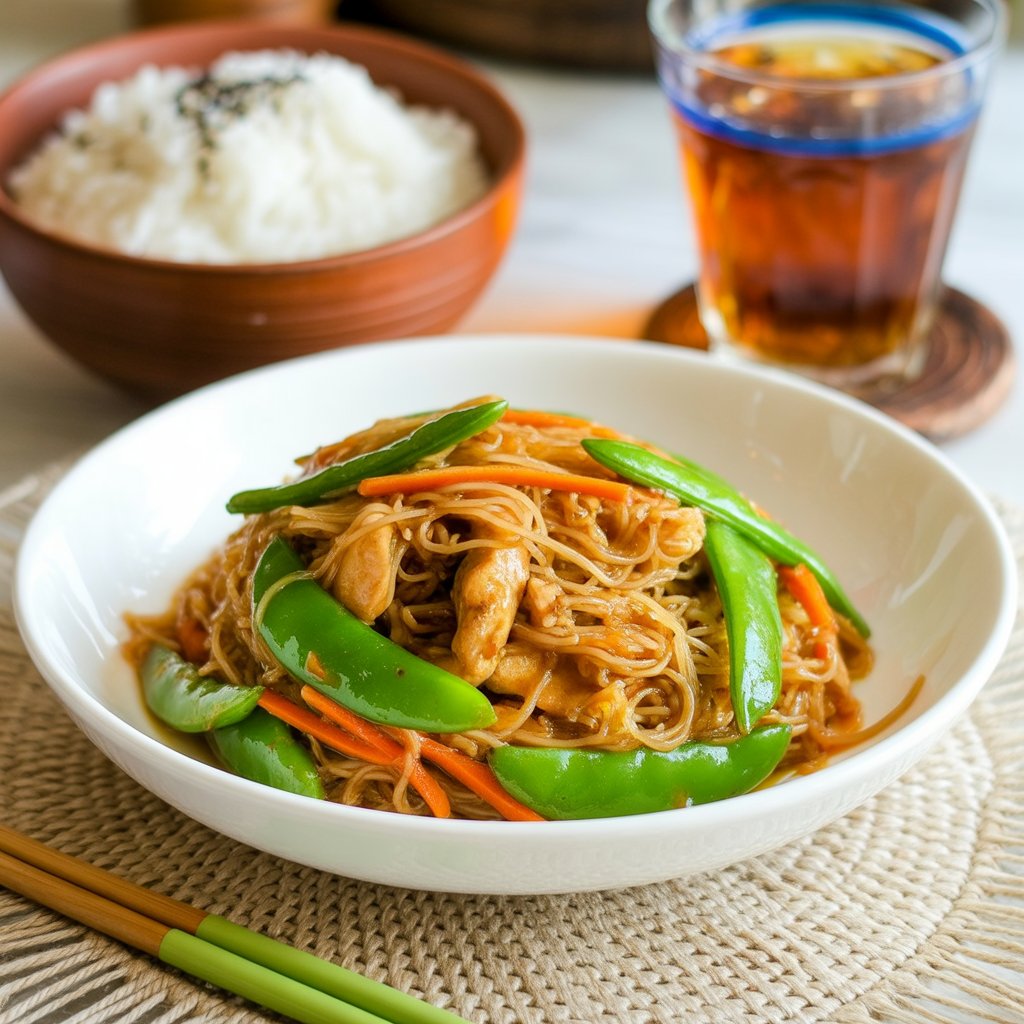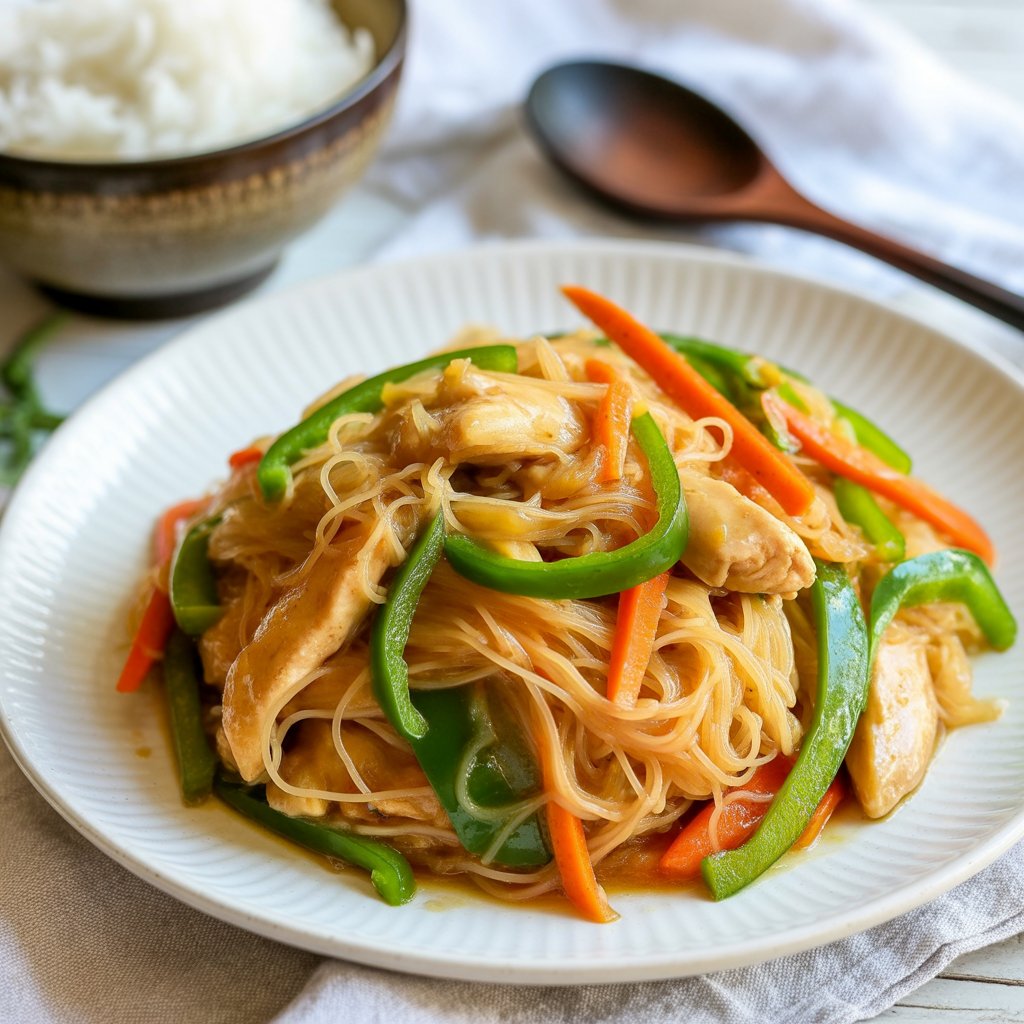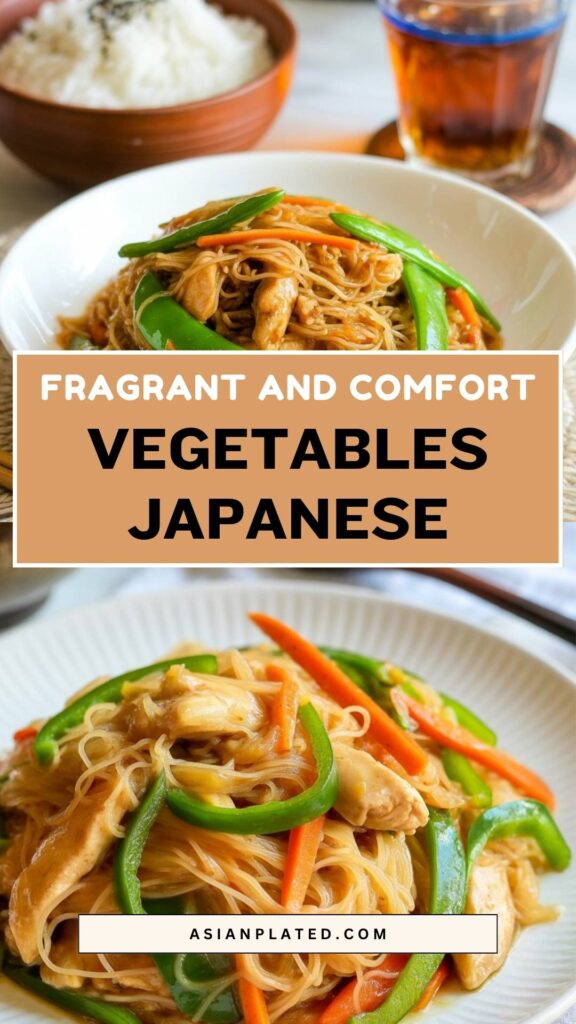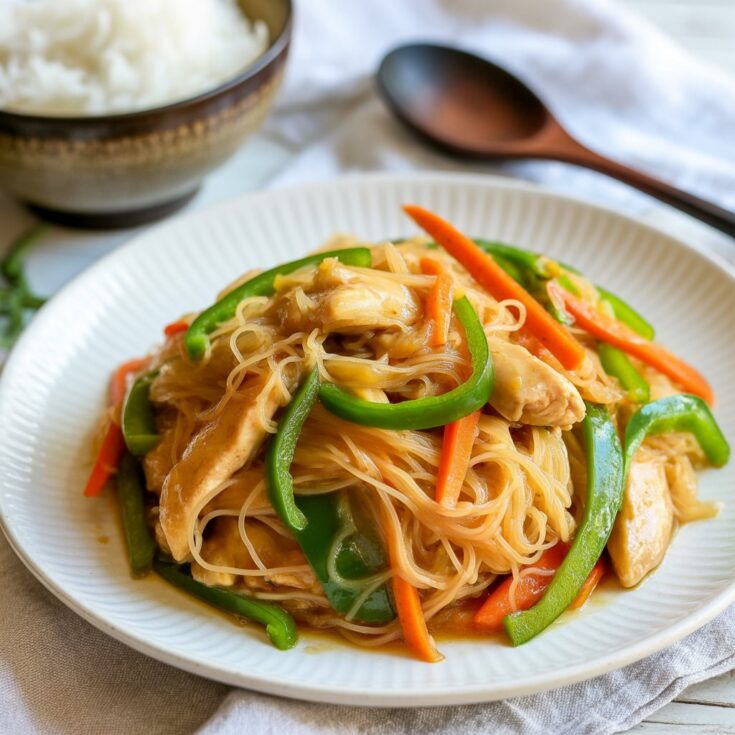Some nights, dinner needs to happen fast. And this Yasai Itame, or Japanese-style stir-fried vegetables, is one of those throw-it-together meals that always saves the day in my kitchen. It’s one of those dishes that feels like comfort food, even though it’s loaded with colorful, fresh veggies. And the best part? You don’t need anything fancy. Just a hot pan, a handful of ingredients, and 15 minutes.

This is one of my go-to meals when the fridge is holding random bits of vegetables that need using up. Add a bit of protein if you want, skip it if you don’t — the dish is flexible and forgiving.
What Is Yasai Itame, Really?
Yasai Itame literally means “vegetable stir-fry” in Japanese, but don’t let the name fool you into thinking it’s strictly vegetarian. In Japanese home cooking, it often includes thin slices of pork or sausage — though I’ve made it plenty of times without meat when I just want something light and clean.
I often make a vegetarian version using tofu or mushrooms for that meaty bite. And yes, you can absolutely make it vegan by skipping any fish sauce or oyster sauce. You won’t miss it — there’s enough flavor from the sautéed onions, garlic, and soy sauce to carry the dish.
Why I Keep Coming Back to This Recipe
I make a lot of stir-fries, but Yasai Itame has a special spot in my weekly dinner rotation. Here’s why:
It’s Fast
On those evenings when I look at the clock and realize it’s already 7:30 and I haven’t even washed rice — this is what I turn to. I can get this from fridge to table in 15 minutes flat, and that’s without rushing.
It’s Flexible
You can’t really mess this up. Bell peppers, carrots, cabbage, green beans, bok choy — it all works. Use what you have. Leftover snow peas? In they go. Half a zucchini? Slice it up. A few pieces of broccoli? Toss ‘em in.
It’s Healthy Without Trying Too Hard
This isn’t one of those recipes where you’re trying to force yourself to “eat clean.” It’s just good, fresh food. You’re cooking veggies quickly over high heat so they stay crisp, and there’s no heavy sauce to drown them. Just garlic, soy sauce, and a bit of sesame oil to bring it together.
It Feels Like Takeout — But Better
It has that fresh-off-the-wok vibe, but without the extra oil or sugar that sneaks into restaurant versions. It tastes light, savory, and deeply satisfying.

My Go-To Tips for Stir-Frying Vegetables at Home
Stir-frying seems easy, but a few little tricks make a big difference. I’ve learned these the hard way — after a few soggy, steamed vegetable situations — so here’s what works for me.
- Prep everything first. Stir-frying is fast. There’s no time to be chopping carrots while the garlic’s already browning. Lay everything out — veggies, sauces, all of it — before the pan gets hot.
- Dry your veggies well. Wet veggies don’t stir-fry — they steam. After washing, I spread everything on a kitchen towel and let it sit for 10 minutes. Even better if you can pat them dry right before cooking.
- Use high heat and a wide pan. A wok is great, but a large flat-bottomed frying pan works too. Just make sure the pan isn’t too crowded. The more space the veggies have, the better they’ll sear.
- Add harder veggies first. Carrots, broccoli stems, green beans — give them a head start. Softer things like cabbage or bean sprouts go in last so they don’t turn to mush.
- Don’t walk away. Stir-frying is all about movement. Toss, stir, flip — keep things moving so everything cooks evenly and quickly.
Don’t Have a Wok? Here’s What I Use
I do love a good carbon steel wok — it gets crazy hot and gives that charred edge to the veggies that’s hard to beat. But I’ll be honest — most nights I just use my big nonstick frying pan. It works just fine for a dish like this, especially if you preheat it properly and don’t overcrowd it.
If your stove can’t crank out restaurant-level heat, don’t stress. Home-style Yasai Itame is still delicious even without wok hei (that smoky charred flavor you get from super high heat).
The trick is to keep the pan hot and avoid piling in too many ingredients at once. If I’m cooking a big batch, I usually stir-fry in two rounds to keep everything crisp.
Serving Ideas from My Table
I usually serve this with a bowl of steamed rice and maybe a miso soup on the side. But sometimes I turn it into a full meal:
- Add tofu or tempeh: Pan-fried tofu cubes make it more filling.
- Top with a fried egg: If you’re not vegan, that runny yolk over stir-fried cabbage and soy sauce is just chef’s kiss.
- Wrap it up: Spoon into lettuce cups or rice paper rolls for something fun and handheld.
Leftovers are great too — I’ve even tossed them into a noodle stir-fry the next day.

Make This Your Own
Think of this recipe more like a template than strict rules. Once you get the basic method down — high heat, quick cooking, keep things dry — you can customize endlessly.
Sometimes I throw in a splash of mirin or sake, or a pinch of chili flakes for some heat. If I have leftover roasted veggies from the night before, I toss them in at the end just to warm through.
Vegetables Japanese

Quick, vibrant, and full of flavor—this Japanese-style stir-fry is the kind of meal I turn to on busy weeknights.
Ingredients
- ¼ green cabbage (about 200g), chopped into bite-sized pieces
- ½ medium carrot (90g), cut into thin matchsticks
- ¼ onion (90g), thinly sliced
- 10 snow peas (30g), strings removed
- 3.5 oz bean sprouts (about 2 cups)
- 6.5 oz thinly sliced pork (or mushrooms, tofu, seafood, or omit for vegan)
- 1 clove garlic, crushed or minced
- 2–3 slices fresh ginger, finely minced
- 1 tbsp neutral oil (like canola or vegetable oil)
Pork Marinade
- 1 tsp soy sauce
- 1 tsp sake
Seasonings
- 1 tsp oyster sauce (or vegetarian stir-fry sauce)
- 1 tsp soy sauce
- ½ tsp kosher salt
- Freshly ground black pepper, to taste
- 2 tsp toasted sesame oil
Instructions
- Marinate the Pork: Cut the pork into small bite-sized pieces and place in a bowl. Add soy sauce and sake, give it a quick mix, and let it sit while you prep the vegetables.
- Prep the Veggies: Slice the onion and cabbage, julienne the carrot, and trim the snow peas. Rinse the bean sprouts and set everything aside. Mince the garlic and ginger—you’ll want these ready to go once the pan heats up.
- Start Stir-Frying: Heat a large skillet or wok over medium-high heat. Once hot, add the oil. Toss in the garlic and ginger, stir for a few seconds until fragrant.
- Add the marinated pork and stir-fry until mostly cooked through—about 80%. You can also fully cook the pork first, remove it from the pan, and add it back later to avoid overcooking.
- Add the Veggies: Start with the onion and cook until it begins to soften. Then toss in the carrots. After a minute or two, add the cabbage and snow peas. Stir-fry everything together until crisp-tender.
- Final Seasoning: Add in the bean sprouts and stir to combine. Drizzle in the oyster sauce and soy sauce, season with salt and pepper, then finish with toasted sesame oil. Give everything one last toss and remove from heat.
Notes
- Serve immediately with freshly steamed rice and maybe a bowl of miso soup on the side for a complete meal.
- Leftovers keep well in the fridge for up to 3 days or can be frozen for up to 2 weeks in an airtight container.
- Let me know if you'd like a version adapted for tofu or mushrooms only—I’ve got some tasty tweaks for those too!
Nutrition Information:
Yield: 4 Serving Size: 1Amount Per Serving: Calories: 571Total Fat: 15gSaturated Fat: 4gTrans Fat: 0gUnsaturated Fat: 10gCholesterol: 41mgSodium: 429mgCarbohydrates: 81gFiber: 18gSugar: 22gProtein: 31g
Asianplated.com, occasionally offers nutritional information for recipes contained on this site. This information is provided as a courtesy and is an estimate only. This information comes from online calculators. Although allchickenrecipes.com attempts to provide accurate nutritional information, these figures are only estimates.
Final Thoughts
Yasai Itame is one of those quietly dependable meals that I make over and over again. It’s not flashy. It won’t win any “most viral recipe” awards. But it’s real food that comes together fast, uses what you have, and tastes good every single time.
If you’re new to stir-frying, give this a shot. And if you’ve made it before, try switching up the veggies or adding a twist of your own. That’s the beauty of it — it adapts to you.
Try other Japanese recipes:

















